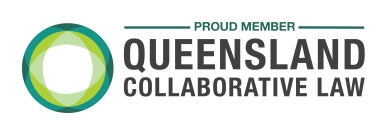Explain to me…Collaborative Law
What is Collaborative Law
Collaborative law is a type of alternative dispute resolution. In a collaborative law setting, each partner works with a collaboratively-trained lawyer (and other collaboratively trained professionals) to work together to resolve legal, financial and emotional issues after separating without going to court.
How did Collaborative law start?
In 1990, Minnesota attorney Stu Webb, after practising family law for about 15 years was reaching a point where he was getting burned out by the adversarial nature of what he did for a living. He decided that a different solution was needed to the traditional adversarial battles in settling family law matters/issues in court.
In February 1990, Webb wrote to the Chief Justice of the Minnesota Supreme Court Justice Sandy Keith informing him that he would no longer be practising in the family law division of the Court and described his new “collaborative” process. In the letter he stated that from his view it was necessary to create an intentional settlement climate that encourages cooperation and creative alternatives. He wrote:
“You and I have both experienced, I’m sure, those occasional times, occurring usually by accident, when in the course of attempting to negotiate a family law settlement, we find ourselves in a conference with the opposing counsel, and perhaps the respective clients, where the dynamics were such that in a climate of positive energy, creative alternatives were presented. In that context, everyone contributed to a final settlement that satisfied all concerned – and everyone left the conference feeling high energy, good feelings and satisfaction. More than likely, the possibility for change in the way the parties related to each other in the future may have greatly increased… Why not create this settlement climate deliberately?”
Collaborative law in practice – the Queensland experience
Collaborative Law originally started in Queensland in 2003 when a group of practitioners in Brisbane and Cairns started to meet on an informal basis to discuss the collaborative approach that had been successful in parts of the United States and Canada.
I was fortunate to have worked for one of the original practitioners in this group, Susan Purdon, now a Judge of the Federal Circuit Court of Australia.
Queensland Collaborative Law (QCL) was established in 2006 and incorporated to introduce collaborative practice following the success of the collaborative law process in the United States, Canada, and the United Kingdom.
OK, but how does it work?
In collaborative law matters, each party retains a collaboratively-trained lawyer to discuss the collaborative process and identify the issues that are important to them and whether the matter might be suitable for the collaborative process.
If both parties agree to use the collaborative process, each of them an their collaborative lawyers sign a collaborative practice contract, which requires the parties to:
- Behave in a respectful manner towards each other;
- Exchange complete financial information;
- Maintain absolute confidentiality throughout the process enabling one another to express frankly their needs and concerns; and
- Reach written agreement without the threat of court proceedings
The collaborative lawyers are supported where necessary by other collaboratively trained practitioners including accountants, financial advisers, mediators, psychologists and counsellors. These practitioners are brought into the process to provide specialist advice and to assist the lawyers and parties in reaching an agreement.
If the parties cannot reach agreement and court is the only alternative, the lawyers must withdraw from the matter and cannot represent the parties in any court proceedings.
I want to learn more about the collaborative law process
I have undertaken collaborative law training and I am currently one of the practitioners in my firm undertaking collaborative law work both privately and through a community based pilot scheme.
 If you would like to know more about the collaborative law process or whether your matter might be suitable, drop me a line below and also have a look at the QCL_A4_brochure on the collaborative law process.
If you would like to know more about the collaborative law process or whether your matter might be suitable, drop me a line below and also have a look at the QCL_A4_brochure on the collaborative law process.

Leave a comment